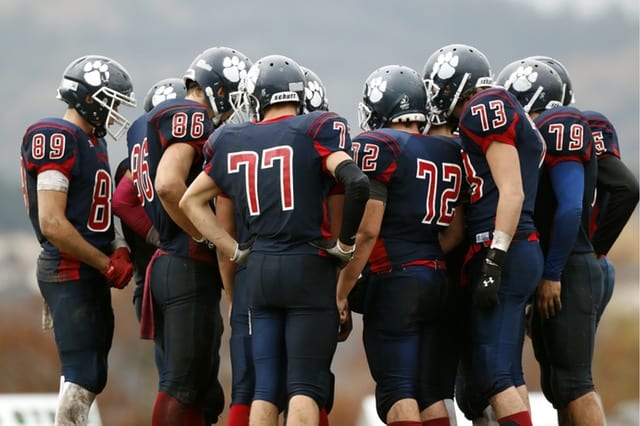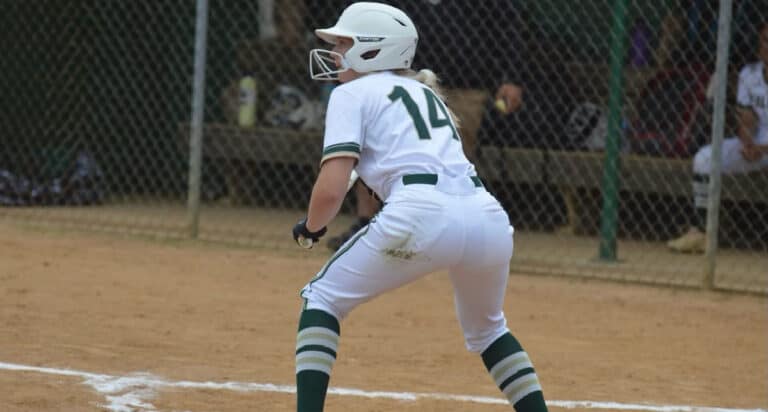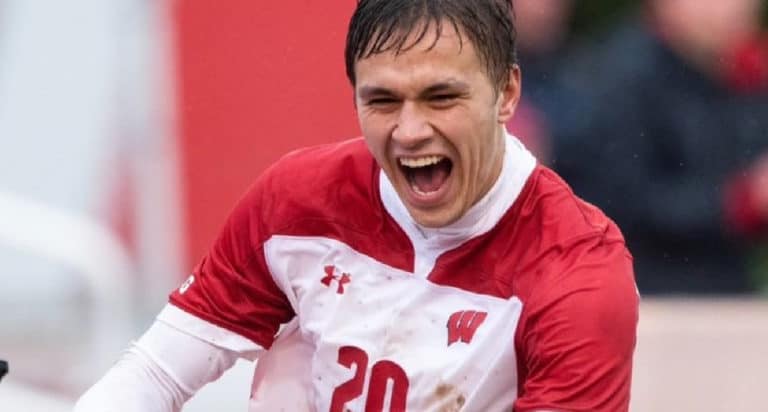One of the most significant and stressful times for families of college-bound students is the college search, and it’s more complex when your student is also an athlete. You’ve probably talked to other parents in the stands about recruitment and playing sports in college, but when it comes time to support your athlete, it helps to have a road-map.
I just watched my son final at his college conference championship swim meet after a semester of top grades at his choice of an idyllic New England college. The path to these results were neither straightforward nor drama free. As your student explores the difference between competing for DI, DII and DIII schools, studies hard for the SAT and ACTSs, and redoubles their sports effort, there are some things you can do to help your student athlete land at a college where they’ll thrive.
10 Things Parents Need to Know About Playing Sports in College
1. Don’t be blinded by the light of a full ride
It’s hard not to think about ROI when you consider the uniforms, travel trips, endless snacks and carpools; you’ve invested considerable money and time. I feel you. I’d estimate I’ve spent at the equivalent of a year’s college tuition on my son’s athletic endeavor. But know this, according to NCAA statistics, only about two-percent of high school athletes are awarded athletic scholarships to compete in college, and only a few of those are for full tuition.
The odds of landing a full college scholarship in many major sports are lower than the chances of being admitted to Harvard, Yale or Stanford. But there is support for talented athlete – at DI and DII schools there are financial packages available. DIII and Ivy League colleges don’t give direct support to athletes, but well-endowed schools may be able to offer financial aid and possibly merit scholarships that considerably lower the financial burden.
2. Help them assess their level of talent
Have a realistic assessment of your athlete’s skills. Only a fraction of high school athletes will continue their athletic careers by playing sports on the collegiate level, according to the NCAA. In my son’s sport, swimming, only 7% of high school swimmers go on to compete at the collegiate level. For individual sports like swimming or track, times are objective assessments to tell them where they stand.
Have your student compare their event times to those that scored at a divisional championship. Coaches will be looking for times in that ballpark. For team sports, your athlete can seek out rankings that compare their team to others in the nation. The high school coach can also provide guidance, as can performance at specialty showcases and camps.
3. Assess the importance of athletics
Just because playing a sport seriously is what they’ve always done, be sure to give them the opportunity to change course. Maybe it’s time to try the debate team or theater activities that practice didn’t allow. Is their sport part of the fabric of their life? Their identity? Are they ready for the rigor of life as a college athlete?
Would playing club sports be just as fulfilling to them? Remember, sport is not likely to be your student’s career, but there are many reasons to pursue sports – the team camaraderie, familiar (if grueling) structure, and preparation for future success. According to EY/ESPNW research, 94% of women surveyed who held C-suite positions played a sport, 52% at a university level.
4. Remember “We” are not applying to college.
Even if you are going to be footing an extraordinarily large bill for the next four years, this is not your rodeo. And applying to colleges is nothing like it was when you were applying for school. The school has to be the right environment, academically, socially and athletically for your child.
5. Help them get moving
For the athlete, everything starts early. Freshman year academics will matter, and your student will need ACT or SAT scores by the summer of junior year. There’s a calendar of official athletic recruitment schedules, but once your student has registered with the NCAA, they need not wait to be contacted.
Suggest they take initiative and demonstrate their interest in a school’s team by filling out online recruitment forms for individual colleges. Meanwhile you can compile those video clips. Many coaches will want to see highlight reels and game tapes.
6. But which schools?
Academics first, decide on the size of the school – that’s the standard advice. But a student athlete may know more about the sports team, so that can be a starting point. You’ll want to be sure they look at whether the college is strong in their likely major if it is in their academic wheelhouse. This is also the time to be clear about what your family can afford, and the magnitude of loans a student might need to take on. The goal is to use athletics to help them find the best match.
From a sports perspective, in addition to considering the division and conference a college competes in, encourage your student to look at which athletes will be graduating to get a sense of the potential open positions a coach will be recruiting for in any given year. Have your student think about playing time and if they want to be a sub on a powerhouse team or a star on a less competitive one.
7. Making Contact
Once they’ve developed a short list, you can help your child write emails to coaches, which should include athletic and academic highlights, GPA, extracurricular activities and something about why that school and the team is appealing. If you can, plan to visit a few schools, and have your student try to schedule conversations with the coaches.
It’s a good idea to join your child on one of these sessions so they can practice for official visits, but keep in mind the coach is only interested in your athlete. Once your student has the hang of meetings, they should have this conversation without you there.
8. Help them keep a cool head and stay organized during the process
Your athlete may well receive letters, and when allowed, phone calls from coaches. It is flattering to be contacted, but don’t let them get caught up in communicating with schools where they have no interest. The comparison with other teammates can be hard too, but remind them that the process is different for everyone.
No coach wants to expend energy on an athlete who is not a viable admissions candidate, so your student should expect to be asked to share their unofficial transcript and test scores for what is called a pre-read. The college’s admission department will give the coach an indication of how likely your student is to be admitted.
A positive read or a likely is not a formal acceptance. That will only come from the admission office in senior year. Coaches have varying levels of input into the admissions process, but any offer the coach makes will still be contingent on acceptance.
9. Official Visits
Official visits – your athlete is allowed five in DI, and one per school in DII and DIII – will allow your child get a real feel for the school, the team, and although they won’t be allowed to practice, clarity on the number and intensity of practices and games. During their time on campus, your athlete will get a taste of the social scene – so have those behavior-related conversations.
Some questions your athlete might want to know form the coach is whether the team lives together, if there are any restrictions related to academics like no Friday classes or a requirement to maintain a certain GPA, whether there is a team training trip, or if the team is expected to be on campus to practice during breaks. They should also explore the expected summer regiment and if they’ll be allowed to participate in special programs like a junior year abroad.
This is also the time to talk about money. Guide your student to ask straightforward questions about the financial package the team can offer, as well as about the opportunity for merit scholarships. Remind them that most people feel awkward talking about money. At the end of a visit, your student will want to weigh how well they like the school, fit with the team, how the school meets their academic needs. It helps to like the coach, but there’s no guarantee the coach will be there all four years.
10. Decision time. The broken arm test
My son had to choose between the prestige of being a DI athlete or the shorter season at one of several DIII schools, and weigh factors like merit offers, strength in his areas of interest and where he’d stand on the team. He got some very persuasive emails from coaches. He revisited schools, and agonized until the end. If your athlete is lucky enough to have multiple offers to weigh, ask them if it passes the “broken arm” test – would they still love the school if they were not playing their sport. Then plan your travel to the first home game. You’ll want to be there to cheer.








